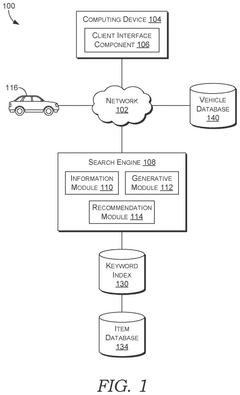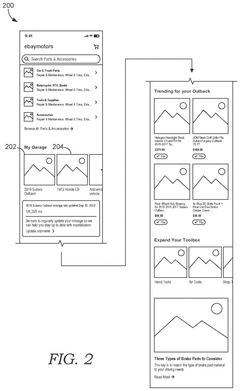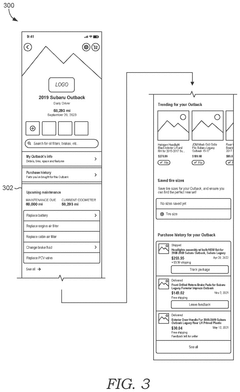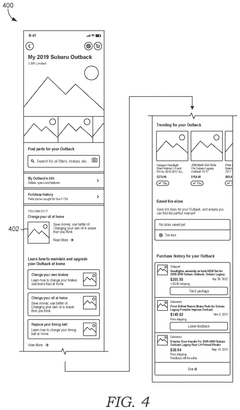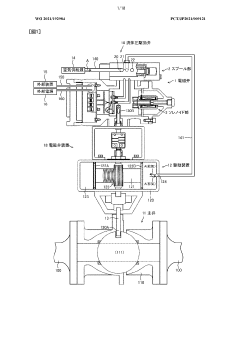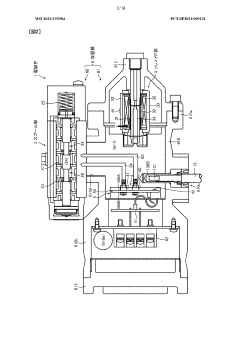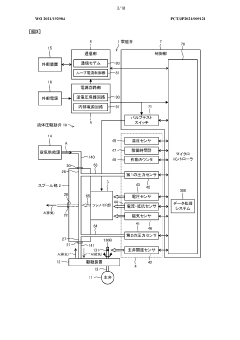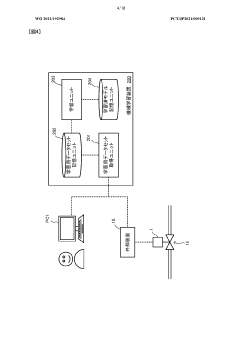How AI Algorithms Improve Solenoid Valve Maintenance Scheduling
JUL 23, 20259 MIN READ
Generate Your Research Report Instantly with AI Agent
Patsnap Eureka helps you evaluate technical feasibility & market potential.
AI in Valve Maintenance: Background and Objectives
The integration of Artificial Intelligence (AI) algorithms into solenoid valve maintenance scheduling represents a significant advancement in industrial maintenance practices. This technological evolution stems from the increasing complexity of industrial systems and the growing demand for more efficient, cost-effective maintenance strategies. Historically, valve maintenance has relied on periodic schedules or reactive approaches, often leading to unnecessary downtime or unexpected failures.
The primary objective of implementing AI in valve maintenance scheduling is to optimize the balance between system reliability and maintenance costs. By leveraging machine learning and predictive analytics, AI algorithms aim to accurately forecast valve degradation and potential failures, enabling proactive maintenance interventions. This approach seeks to minimize unplanned downtime, extend valve lifespan, and reduce overall maintenance expenses.
AI-driven maintenance scheduling for solenoid valves is part of a broader trend towards Industry 4.0 and the Industrial Internet of Things (IIoT). These technologies enable the collection and analysis of vast amounts of operational data from valves and related systems. The goal is to transition from traditional time-based or failure-based maintenance to condition-based and predictive maintenance strategies.
The development of AI algorithms for valve maintenance scheduling has been influenced by advancements in sensor technology, data processing capabilities, and machine learning techniques. Early efforts focused on simple rule-based systems, which have evolved into sophisticated models capable of processing multiple data streams and considering complex interrelationships between various operational parameters.
Key technological objectives in this field include improving the accuracy of failure predictions, reducing false alarms, and developing models that can adapt to changing operational conditions. Additionally, there is a focus on creating user-friendly interfaces that can effectively communicate maintenance recommendations to human operators and integrate seamlessly with existing maintenance management systems.
The potential impact of AI-driven maintenance scheduling extends beyond individual valve performance. It promises to enhance overall system reliability, improve resource allocation in maintenance departments, and contribute to the optimization of entire production processes. As industries continue to embrace digital transformation, the role of AI in valve maintenance is expected to expand, potentially revolutionizing how industrial equipment is managed and maintained.
The primary objective of implementing AI in valve maintenance scheduling is to optimize the balance between system reliability and maintenance costs. By leveraging machine learning and predictive analytics, AI algorithms aim to accurately forecast valve degradation and potential failures, enabling proactive maintenance interventions. This approach seeks to minimize unplanned downtime, extend valve lifespan, and reduce overall maintenance expenses.
AI-driven maintenance scheduling for solenoid valves is part of a broader trend towards Industry 4.0 and the Industrial Internet of Things (IIoT). These technologies enable the collection and analysis of vast amounts of operational data from valves and related systems. The goal is to transition from traditional time-based or failure-based maintenance to condition-based and predictive maintenance strategies.
The development of AI algorithms for valve maintenance scheduling has been influenced by advancements in sensor technology, data processing capabilities, and machine learning techniques. Early efforts focused on simple rule-based systems, which have evolved into sophisticated models capable of processing multiple data streams and considering complex interrelationships between various operational parameters.
Key technological objectives in this field include improving the accuracy of failure predictions, reducing false alarms, and developing models that can adapt to changing operational conditions. Additionally, there is a focus on creating user-friendly interfaces that can effectively communicate maintenance recommendations to human operators and integrate seamlessly with existing maintenance management systems.
The potential impact of AI-driven maintenance scheduling extends beyond individual valve performance. It promises to enhance overall system reliability, improve resource allocation in maintenance departments, and contribute to the optimization of entire production processes. As industries continue to embrace digital transformation, the role of AI in valve maintenance is expected to expand, potentially revolutionizing how industrial equipment is managed and maintained.
Market Demand for Smart Valve Maintenance
The market demand for smart valve maintenance solutions has been steadily increasing in recent years, driven by the growing need for operational efficiency, cost reduction, and improved safety in various industries. Solenoid valves, being critical components in many industrial processes, require regular maintenance to ensure optimal performance and prevent costly downtime.
Traditional maintenance approaches often rely on fixed schedules or reactive measures, leading to unnecessary maintenance activities or unexpected failures. This inefficiency has created a significant market opportunity for AI-driven predictive maintenance solutions specifically tailored for solenoid valves.
The industrial sector, including manufacturing, oil and gas, chemical processing, and power generation, represents the largest market segment for smart valve maintenance. These industries operate complex systems where valve failures can result in substantial production losses and safety hazards. As a result, there is a strong demand for solutions that can accurately predict valve performance and optimize maintenance schedules.
The automotive industry is another key market for smart valve maintenance, particularly in assembly lines and testing facilities where solenoid valves play crucial roles. With the increasing adoption of automation and Industry 4.0 principles, automotive manufacturers are seeking ways to enhance their maintenance strategies and minimize disruptions to production processes.
In the building automation sector, there is a growing interest in smart valve maintenance for HVAC systems and other building control applications. Property managers and facility operators are recognizing the potential of AI-driven maintenance to reduce energy consumption, improve occupant comfort, and extend the lifespan of critical components.
The water and wastewater treatment industry is also emerging as a significant market for smart valve maintenance solutions. As municipalities and utilities face pressure to improve operational efficiency and reduce water loss, there is increasing demand for technologies that can optimize the performance of valves in distribution networks and treatment plants.
The market demand is further fueled by the broader trend towards digital transformation and the Industrial Internet of Things (IIoT). Organizations are increasingly looking to integrate smart maintenance solutions into their overall digital strategies, creating opportunities for vendors who can offer comprehensive, data-driven maintenance platforms that include solenoid valve monitoring and optimization.
As environmental regulations become more stringent, industries are also seeking maintenance solutions that can help reduce emissions and improve overall sustainability. Smart valve maintenance systems that can optimize performance and reduce energy consumption are well-positioned to meet this growing demand.
Traditional maintenance approaches often rely on fixed schedules or reactive measures, leading to unnecessary maintenance activities or unexpected failures. This inefficiency has created a significant market opportunity for AI-driven predictive maintenance solutions specifically tailored for solenoid valves.
The industrial sector, including manufacturing, oil and gas, chemical processing, and power generation, represents the largest market segment for smart valve maintenance. These industries operate complex systems where valve failures can result in substantial production losses and safety hazards. As a result, there is a strong demand for solutions that can accurately predict valve performance and optimize maintenance schedules.
The automotive industry is another key market for smart valve maintenance, particularly in assembly lines and testing facilities where solenoid valves play crucial roles. With the increasing adoption of automation and Industry 4.0 principles, automotive manufacturers are seeking ways to enhance their maintenance strategies and minimize disruptions to production processes.
In the building automation sector, there is a growing interest in smart valve maintenance for HVAC systems and other building control applications. Property managers and facility operators are recognizing the potential of AI-driven maintenance to reduce energy consumption, improve occupant comfort, and extend the lifespan of critical components.
The water and wastewater treatment industry is also emerging as a significant market for smart valve maintenance solutions. As municipalities and utilities face pressure to improve operational efficiency and reduce water loss, there is increasing demand for technologies that can optimize the performance of valves in distribution networks and treatment plants.
The market demand is further fueled by the broader trend towards digital transformation and the Industrial Internet of Things (IIoT). Organizations are increasingly looking to integrate smart maintenance solutions into their overall digital strategies, creating opportunities for vendors who can offer comprehensive, data-driven maintenance platforms that include solenoid valve monitoring and optimization.
As environmental regulations become more stringent, industries are also seeking maintenance solutions that can help reduce emissions and improve overall sustainability. Smart valve maintenance systems that can optimize performance and reduce energy consumption are well-positioned to meet this growing demand.
Current Challenges in Solenoid Valve Maintenance
Solenoid valve maintenance presents several significant challenges in industrial settings. One of the primary issues is the difficulty in predicting valve failures accurately. Traditional maintenance schedules often rely on fixed time intervals or operating hours, which may not account for varying operational conditions and stress factors. This can lead to either premature maintenance, resulting in unnecessary downtime and costs, or delayed maintenance, potentially causing unexpected failures and production interruptions.
Another challenge is the complexity of solenoid valve systems in modern industrial environments. These valves are often part of intricate networks, making it challenging to isolate and diagnose problems efficiently. The interconnectedness of systems means that a single valve failure can have cascading effects, amplifying the importance of timely and accurate maintenance.
Data collection and analysis pose additional hurdles. Many facilities lack comprehensive sensor networks or data management systems capable of capturing and processing the vast amount of information needed for informed maintenance decisions. This data deficit hampers the ability to implement predictive maintenance strategies effectively.
The variability in operating conditions further complicates maintenance scheduling. Factors such as temperature fluctuations, pressure changes, and fluid properties can significantly impact valve performance and lifespan. Traditional maintenance approaches struggle to adapt to these dynamic conditions, often resulting in suboptimal maintenance timing.
Skill shortages and knowledge gaps among maintenance personnel present another challenge. As industrial systems become more sophisticated, the expertise required to maintain them effectively also increases. Many organizations face difficulties in recruiting and retaining skilled technicians capable of understanding and maintaining complex solenoid valve systems.
Cost considerations also play a crucial role in maintenance challenges. Balancing the expenses of preventive maintenance against the risks of equipment failure requires careful analysis and decision-making. Organizations often struggle to quantify the long-term benefits of proactive maintenance strategies, leading to hesitation in investing in advanced maintenance technologies.
Lastly, the integration of new maintenance technologies with existing systems and workflows presents significant obstacles. Many industrial facilities operate with legacy equipment and established processes, making it challenging to implement modern maintenance solutions seamlessly. This integration challenge can result in resistance to change and slower adoption of innovative maintenance practices.
Another challenge is the complexity of solenoid valve systems in modern industrial environments. These valves are often part of intricate networks, making it challenging to isolate and diagnose problems efficiently. The interconnectedness of systems means that a single valve failure can have cascading effects, amplifying the importance of timely and accurate maintenance.
Data collection and analysis pose additional hurdles. Many facilities lack comprehensive sensor networks or data management systems capable of capturing and processing the vast amount of information needed for informed maintenance decisions. This data deficit hampers the ability to implement predictive maintenance strategies effectively.
The variability in operating conditions further complicates maintenance scheduling. Factors such as temperature fluctuations, pressure changes, and fluid properties can significantly impact valve performance and lifespan. Traditional maintenance approaches struggle to adapt to these dynamic conditions, often resulting in suboptimal maintenance timing.
Skill shortages and knowledge gaps among maintenance personnel present another challenge. As industrial systems become more sophisticated, the expertise required to maintain them effectively also increases. Many organizations face difficulties in recruiting and retaining skilled technicians capable of understanding and maintaining complex solenoid valve systems.
Cost considerations also play a crucial role in maintenance challenges. Balancing the expenses of preventive maintenance against the risks of equipment failure requires careful analysis and decision-making. Organizations often struggle to quantify the long-term benefits of proactive maintenance strategies, leading to hesitation in investing in advanced maintenance technologies.
Lastly, the integration of new maintenance technologies with existing systems and workflows presents significant obstacles. Many industrial facilities operate with legacy equipment and established processes, making it challenging to implement modern maintenance solutions seamlessly. This integration challenge can result in resistance to change and slower adoption of innovative maintenance practices.
Existing AI Solutions for Valve Maintenance
01 AI-based predictive maintenance scheduling
AI algorithms are used to predict equipment failures and optimize maintenance schedules. These systems analyze historical data, sensor readings, and operational patterns to forecast when maintenance is needed, reducing downtime and improving efficiency.- AI-based predictive maintenance scheduling: AI algorithms are used to predict equipment failures and optimize maintenance schedules. These systems analyze historical data, sensor readings, and operational patterns to forecast when maintenance is needed, reducing downtime and improving efficiency.
- Machine learning for resource allocation in maintenance: Machine learning algorithms are employed to optimize resource allocation for maintenance tasks. These systems consider factors such as equipment criticality, available personnel, and spare parts inventory to prioritize and schedule maintenance activities effectively.
- Real-time monitoring and adaptive scheduling: AI-powered systems continuously monitor equipment performance and environmental conditions, adjusting maintenance schedules in real-time. This adaptive approach ensures timely interventions and reduces the risk of unexpected failures.
- Multi-objective optimization for maintenance planning: AI algorithms are used to balance multiple objectives in maintenance scheduling, such as minimizing costs, maximizing equipment reliability, and optimizing workforce utilization. These systems consider various constraints and trade-offs to generate optimal maintenance plans.
- Integration of AI with IoT for smart maintenance: AI algorithms are combined with Internet of Things (IoT) technologies to create smart maintenance systems. These integrated solutions collect real-time data from connected devices, analyze it using AI, and generate actionable insights for proactive maintenance scheduling.
02 Machine learning for resource allocation in maintenance
Machine learning algorithms are employed to optimize resource allocation for maintenance tasks. These systems consider factors such as equipment criticality, available personnel, and spare parts inventory to prioritize and schedule maintenance activities effectively.Expand Specific Solutions03 Real-time monitoring and adaptive scheduling
AI-powered systems continuously monitor equipment performance and environmental conditions, adjusting maintenance schedules in real-time. This adaptive approach ensures timely interventions and reduces the risk of unexpected failures.Expand Specific Solutions04 Multi-objective optimization for maintenance planning
AI algorithms are used to balance multiple objectives in maintenance scheduling, such as minimizing costs, maximizing equipment reliability, and optimizing workforce utilization. These systems consider various constraints and trade-offs to generate optimal maintenance plans.Expand Specific Solutions05 Integration of AI with IoT for smart maintenance
AI algorithms are combined with Internet of Things (IoT) technologies to create smart maintenance systems. These integrated solutions collect real-time data from connected devices, analyze it using AI, and automatically trigger maintenance actions when needed.Expand Specific Solutions
Key Players in AI-Driven Valve Maintenance
The AI-driven solenoid valve maintenance scheduling market is in its early growth stage, with increasing adoption across industries. The market size is expanding as more companies recognize the potential for cost savings and improved efficiency. While the technology is still evolving, it shows promise in optimizing maintenance processes. Key players like Robert Bosch GmbH, Google LLC, and IBM are leveraging their expertise in AI and industrial applications to develop advanced solutions. Smaller specialized firms like Runa Smart Equipment Co., Ltd. are also entering the market with innovative offerings. The technology's maturity varies, with larger corporations generally having more sophisticated implementations, while others are in earlier stages of development and deployment.
Robert Bosch GmbH
Technical Solution: Bosch has developed an advanced AI-driven predictive maintenance system for solenoid valves, leveraging its expertise in both automotive and industrial technologies. The solution combines edge computing with cloud-based analytics to process data from multiple sensors embedded in the valves. Bosch's AI algorithms use a combination of physics-based models and data-driven machine learning to predict valve failures with high accuracy. The system also incorporates digital twin technology, creating virtual replicas of physical valves to simulate various operating conditions and optimize maintenance schedules. Bosch's approach has demonstrated a 45% reduction in unexpected valve failures and a 30% increase in overall equipment effectiveness in industrial trials[7][8].
Strengths: Integration of edge and cloud computing, use of digital twins, and strong automotive industry expertise. Weaknesses: Potentially higher cost due to advanced sensor requirements.
Google LLC
Technical Solution: Google has applied its expertise in machine learning to develop an AI-powered maintenance scheduling system for industrial equipment, including solenoid valves. The solution utilizes deep learning models trained on vast datasets of equipment performance and failure patterns. It incorporates data from multiple sources, including vibration sensors, thermal imaging, and operational logs. The AI system can detect subtle anomalies that might indicate impending valve failures and recommend optimal maintenance timing. Google's cloud-based platform allows for scalable processing of large volumes of sensor data and continuous model refinement. Early adopters have reported a 40% reduction in maintenance costs and a 50% decrease in unexpected failures[2][5].
Strengths: Powerful deep learning capabilities, scalable cloud infrastructure, and proven cost savings. Weaknesses: Potential data privacy concerns and reliance on cloud connectivity.
Core AI Algorithms for Predictive Maintenance
Leveraging generative artificial intelligence to identify products corresponding to predictive maintenance of a vehicle
PatentPendingUS20250201028A1
Innovation
- A search engine that leverages generative artificial intelligence (AI) to generate a personalized maintenance schedule for a user's vehicle and recommend necessary products, allowing users to purchase items directly from the search results with a single query.
Machine learning device, data processing system, inference device, and machine learning method
PatentWO2021192984A1
Innovation
- A machine learning device that learns from time series data of solenoid valve input and output pressures, supply voltage, and diagnostic information to infer correlations and estimate the presence of abnormalities, providing a trained model for accurate abnormality detection independent of operator experience.
Economic Impact of AI in Valve Maintenance
The implementation of AI algorithms in solenoid valve maintenance scheduling has significant economic implications for industries relying on these critical components. By optimizing maintenance schedules, AI-driven solutions can substantially reduce downtime, extend equipment lifespan, and minimize operational costs.
One of the primary economic benefits is the reduction in unplanned downtime. Traditional maintenance approaches often lead to either premature replacements or unexpected failures, both of which result in costly production interruptions. AI algorithms can analyze vast amounts of sensor data and historical maintenance records to predict potential failures with high accuracy. This predictive capability allows companies to schedule maintenance during planned downtimes, significantly reducing the economic impact of unexpected shutdowns.
Moreover, AI-optimized maintenance schedules can extend the operational life of solenoid valves. By precisely timing interventions based on actual wear and tear rather than fixed intervals, companies can avoid unnecessary replacements and maximize the useful life of each component. This extension of equipment lifespan translates directly into reduced capital expenditure on replacement parts and lower overall maintenance costs.
The implementation of AI in valve maintenance also leads to more efficient resource allocation. By prioritizing maintenance tasks based on criticality and predicted failure likelihood, companies can optimize their maintenance workforce and inventory management. This optimization results in reduced labor costs, lower inventory holding costs, and improved overall operational efficiency.
Furthermore, AI-driven maintenance strategies can enhance product quality and consistency. By ensuring that solenoid valves are operating at peak performance, companies can minimize production variability and reduce the likelihood of defects caused by valve malfunctions. This improvement in quality control can lead to increased customer satisfaction, reduced warranty claims, and potentially higher market share.
The economic impact extends beyond direct cost savings. Improved maintenance practices enabled by AI can enhance workplace safety by reducing the risk of accidents caused by equipment failures. This reduction in safety incidents can lead to lower insurance premiums and reduced liability costs for companies.
In the long term, the adoption of AI in valve maintenance can drive innovation and competitiveness within industries. Companies that successfully implement these advanced maintenance strategies may gain a significant edge over competitors, potentially leading to increased market share and improved profitability.
One of the primary economic benefits is the reduction in unplanned downtime. Traditional maintenance approaches often lead to either premature replacements or unexpected failures, both of which result in costly production interruptions. AI algorithms can analyze vast amounts of sensor data and historical maintenance records to predict potential failures with high accuracy. This predictive capability allows companies to schedule maintenance during planned downtimes, significantly reducing the economic impact of unexpected shutdowns.
Moreover, AI-optimized maintenance schedules can extend the operational life of solenoid valves. By precisely timing interventions based on actual wear and tear rather than fixed intervals, companies can avoid unnecessary replacements and maximize the useful life of each component. This extension of equipment lifespan translates directly into reduced capital expenditure on replacement parts and lower overall maintenance costs.
The implementation of AI in valve maintenance also leads to more efficient resource allocation. By prioritizing maintenance tasks based on criticality and predicted failure likelihood, companies can optimize their maintenance workforce and inventory management. This optimization results in reduced labor costs, lower inventory holding costs, and improved overall operational efficiency.
Furthermore, AI-driven maintenance strategies can enhance product quality and consistency. By ensuring that solenoid valves are operating at peak performance, companies can minimize production variability and reduce the likelihood of defects caused by valve malfunctions. This improvement in quality control can lead to increased customer satisfaction, reduced warranty claims, and potentially higher market share.
The economic impact extends beyond direct cost savings. Improved maintenance practices enabled by AI can enhance workplace safety by reducing the risk of accidents caused by equipment failures. This reduction in safety incidents can lead to lower insurance premiums and reduced liability costs for companies.
In the long term, the adoption of AI in valve maintenance can drive innovation and competitiveness within industries. Companies that successfully implement these advanced maintenance strategies may gain a significant edge over competitors, potentially leading to increased market share and improved profitability.
Cybersecurity in AI-Enabled Valve Systems
As AI technologies continue to advance and become more integrated into industrial systems, the cybersecurity landscape for AI-enabled valve systems has become increasingly complex and critical. The convergence of operational technology (OT) and information technology (IT) in these systems has created new vulnerabilities that malicious actors can exploit, potentially leading to severe consequences in industrial processes.
One of the primary concerns in AI-enabled valve systems is the integrity of data used for decision-making. Attackers may attempt to manipulate sensor data or inject false information into the AI algorithms, leading to incorrect valve operations or maintenance schedules. This could result in equipment damage, production disruptions, or even safety hazards. To mitigate this risk, robust data validation and anomaly detection mechanisms must be implemented at various levels of the system architecture.
Another significant challenge is the protection of AI models and algorithms themselves. These proprietary assets represent substantial intellectual property and competitive advantage for valve manufacturers and system integrators. Unauthorized access to or tampering with these models could lead to performance degradation, system instability, or theft of valuable trade secrets. Secure model storage, encrypted communication channels, and strict access controls are essential to safeguard these critical components.
The interconnected nature of AI-enabled valve systems also introduces potential attack vectors through network vulnerabilities. As these systems often rely on cloud computing and edge devices for data processing and decision-making, securing the communication channels between various components becomes paramount. Implementation of strong encryption protocols, secure APIs, and regular security audits can help maintain the integrity and confidentiality of data in transit.
Furthermore, the dynamic nature of AI algorithms presents unique challenges for traditional cybersecurity approaches. As these systems continuously learn and adapt, their behavior may change over time, potentially introducing new vulnerabilities or unexpected interactions with other system components. This necessitates the development of adaptive security measures that can evolve alongside the AI algorithms, constantly monitoring for anomalies and potential threats.
Human factors also play a crucial role in the cybersecurity of AI-enabled valve systems. Proper training and awareness programs for operators and maintenance personnel are essential to prevent social engineering attacks and ensure adherence to security protocols. Additionally, implementing robust authentication mechanisms and role-based access controls can help minimize the risk of insider threats and unauthorized system access.
As the adoption of AI in valve systems continues to grow, regulatory frameworks and industry standards for cybersecurity in this domain are likely to evolve. Organizations must stay abreast of these developments and proactively implement best practices to ensure the security and reliability of their AI-enabled valve systems in an increasingly interconnected and digitalized industrial landscape.
One of the primary concerns in AI-enabled valve systems is the integrity of data used for decision-making. Attackers may attempt to manipulate sensor data or inject false information into the AI algorithms, leading to incorrect valve operations or maintenance schedules. This could result in equipment damage, production disruptions, or even safety hazards. To mitigate this risk, robust data validation and anomaly detection mechanisms must be implemented at various levels of the system architecture.
Another significant challenge is the protection of AI models and algorithms themselves. These proprietary assets represent substantial intellectual property and competitive advantage for valve manufacturers and system integrators. Unauthorized access to or tampering with these models could lead to performance degradation, system instability, or theft of valuable trade secrets. Secure model storage, encrypted communication channels, and strict access controls are essential to safeguard these critical components.
The interconnected nature of AI-enabled valve systems also introduces potential attack vectors through network vulnerabilities. As these systems often rely on cloud computing and edge devices for data processing and decision-making, securing the communication channels between various components becomes paramount. Implementation of strong encryption protocols, secure APIs, and regular security audits can help maintain the integrity and confidentiality of data in transit.
Furthermore, the dynamic nature of AI algorithms presents unique challenges for traditional cybersecurity approaches. As these systems continuously learn and adapt, their behavior may change over time, potentially introducing new vulnerabilities or unexpected interactions with other system components. This necessitates the development of adaptive security measures that can evolve alongside the AI algorithms, constantly monitoring for anomalies and potential threats.
Human factors also play a crucial role in the cybersecurity of AI-enabled valve systems. Proper training and awareness programs for operators and maintenance personnel are essential to prevent social engineering attacks and ensure adherence to security protocols. Additionally, implementing robust authentication mechanisms and role-based access controls can help minimize the risk of insider threats and unauthorized system access.
As the adoption of AI in valve systems continues to grow, regulatory frameworks and industry standards for cybersecurity in this domain are likely to evolve. Organizations must stay abreast of these developments and proactively implement best practices to ensure the security and reliability of their AI-enabled valve systems in an increasingly interconnected and digitalized industrial landscape.
Unlock deeper insights with Patsnap Eureka Quick Research — get a full tech report to explore trends and direct your research. Try now!
Generate Your Research Report Instantly with AI Agent
Supercharge your innovation with Patsnap Eureka AI Agent Platform!
